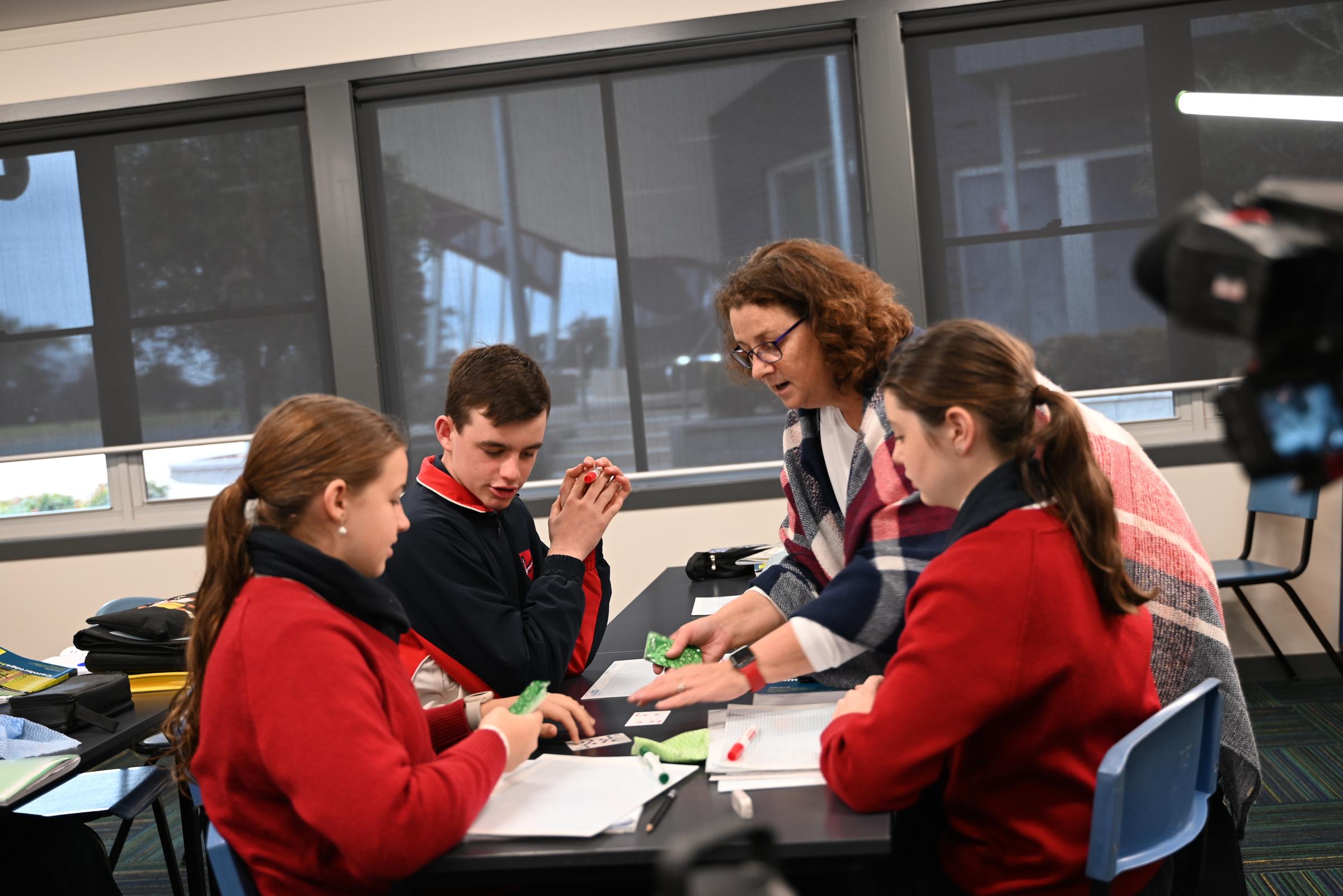Teaching & Learning

Our school has been fortunate this year to work with and learn from a leading expert in the field of educational neuroscience, Dr Jared Cooney Horvath.
All staff across our school have been engaging twice termly in professional development in the “Science of Learning”. We are committed to understanding and aligning our teaching practice to suit the way the brain learns, so that we can maximise learning outcomes for our students.
One of our recent focus areas was the notion that written and spoken words do not mix. Below is an explanation of this learning principle and ways you can support your child at home.
The Science of Learning: Why Written and Spoken Words Do Not Mix
Our brains are incredible, capable of processing vast amounts of information every second. However, when it comes to processing written and spoken words simultaneously, the brain hits a bit of a roadblock. This is due to the way different areas of the brain handle these tasks. The part of the brain responsible for processing spoken language is different from the part that processes written language. When both types of information are presented at the same time, these areas can become overloaded, making it hard to fully comprehend either the written or spoken word.
Imagine trying to listen to two people speaking at the same time. It's challenging to catch every word. This is because our brains are wired to focus on one type of information at a time. When we read, we translate letters and words into meaningful language which is a process that requires concentration and cognitive effort. Similarly, when we listen, we hear words and sentences. When these two activities occur simultaneously, our brain struggles to keep up.
How to support your child at home: Understanding that “Written and Spoken Words Don’t Mix”, can help us create better learning environments at home for our children.
Separate Reading and Listening: Encourage your child to focus on either reading or listening, but not both at the same time e.g. if they are reading a textbook, let them read quietly without additional auditory input. If they are listening to an audiobook, allow them to close their eyes or look at something non-distracting.
Create a Quiet Study Space: Ensure that your child's study area is free from distractions. A quiet environment helps them concentrate better on their reading or listening tasks.
Practice Active Listening and Reading: Engage your child’s active listening skills by asking them to summarise what they have heard or promote active reading skills by asking your child to take notes as they are reading, then report back to you what they understand from the text. This helps reinforce the information your child has read and improves comprehension.
Set Clear Routines for Reading and Listening: Establish specific times for reading and other times for listening activities. This routine helps the brain adjust and perform better in each activity.
By understanding the brain's limitations and creating a supportive environment, we can help our children improve their focus and comprehension. It allows the brain to do what it does best, concentrating on one task at a time.
(adapted from the work of Dr Jared Cooney Horvath)
Mrs Brooke Barber
Director of Teaching and Learning K-12
